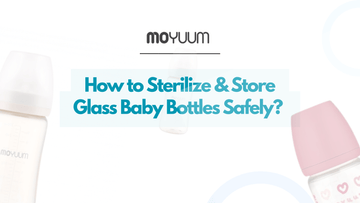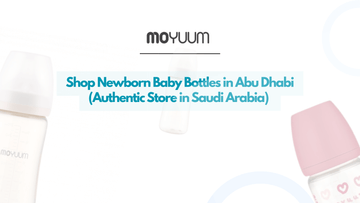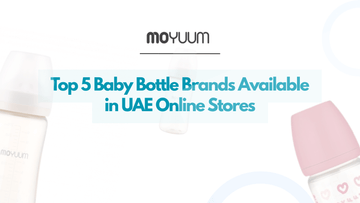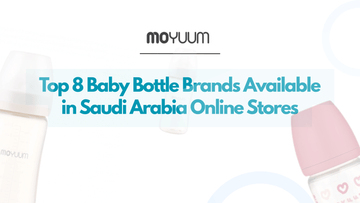Sterilizing your baby’s feeding bottles isn’t just a routine—it’s an essential step in protecting your baby’s developing immune system. In the first few months of life, infants are especially vulnerable to bacteria, viruses, and mold that can linger in milk residue or damp bottle parts.
Whether you’re using formula, expressed breast milk, or a combination of both, learning how to properly sterilize and store glass baby bottles can give you peace of mind and help reduce the risk of infections.
In this guide, we’ll walk you through safe, step-by-step methods to keep your bottles clean, dry, and ready—so every feed is as safe as it is soothing.
Step 1: Wash the Bottles with Soap and Warm Water
Before sterilizing, always wash your glass bottles, nipples, and rings thoroughly with mild baby-safe soap and warm water. This removes leftover milk residue and surface bacteria.
Even the cleanest-looking bottle can harbor hidden milk proteins or bacteria. That’s why it’s important to always wash your baby’s bottles first—before any sterilization process. Use a bottle brush to reach into the base and corners of the bottle.
Pay close attention to the nipple area where milk can hide. Rinse everything thoroughly to ensure no soap remains. A clean start is essential for safe sterilization.
Step 2: Choose a Sterilization Method That Works for You
Boiling, steam sterilizers, and UV sterilizers are all safe methods. Pick one that fits your routine, tools, and lifestyle without overcomplicating your daily feeding workflow.
There’s no one-size-fits-all sterilizing method. You might use a traditional stovetop boil, a microwave or electric steam sterilizer, or a modern UV sterilizer. Each method works well when done correctly.
Your choice depends on what’s accessible and comfortable for your lifestyle. What matters most is that you sterilize regularly and follow the steps precisely for each method.
🔹 Boiling Method
Boiling is the most affordable and widely used method. It’s great for thorough cleaning and doesn’t require any special devices—just a clean pot and some time.
Place all clean bottles and parts into a large pot filled with water. Ensure all items are fully submerged. Bring the water to a rolling boil and let it continue for 5–10 minutes. Afterward, use clean tongs to remove the items carefully.
Let them cool before handling directly. This method is reliable and easy to do even while traveling.
🔹 Steam Sterilizer Method
Steam sterilizers are convenient and quick. They use hot steam to kill 99.9% of germs without chemicals, making them a great everyday choice for busy moms.
Electric or microwave steam sterilizers save time and energy. Fill the base with water (as directed), place bottles upside down, and start the cycle. The high temperature steam disinfects all surfaces. Once done, allow bottles to cool before removing them. Some sterilizers come with drying and storage functions, which can help reduce moisture buildup.
🔹 UV Sterilizer Method
UV sterilizers use light to kill bacteria, mold, and viruses. They’re efficient, chemical-free, and ideal for parents looking for hands-free, advanced cleaning options.
After washing, place completely dry bottles inside the UV sterilizer. Arrange them with space so the light can reach all angles. Run the cycle as per your device’s manual (typically 10–15 minutes). UV units are quiet, gentle, and excellent for delicate glass bottles. Some models also dry and store bottles, keeping them sterile until you’re ready to use them.
Step 3: Let Bottles Air Dry Completely
Air drying reduces the risk of contamination. Never use dish towels to dry bottles, as they may carry bacteria even after washing.
Once bottles are sterilized, they should be placed on a clean, dedicated bottle drying rack. Avoid stacking or enclosing wet bottles. Leave space between each item so airflow can reach all surfaces. Letting bottles air dry helps prevent trapped moisture, which can lead to mold. If you're using a UV sterilizer with drying mode, allow it to complete the cycle before storage.
Step 4: Store Sterilized Bottles in a Clean, Dry Space
After drying, bottles should be stored fully assembled in a dust-free, enclosed space—away from sinks, food areas, or direct sunlight.
Keep clean bottles protected from dust and airborne contaminants by storing them in a closed cabinet or sanitized storage container. Fully assemble the bottles (nipple, ring, cap) to keep the insides clean. If you’re prepping ahead for a day or two, ensure all pieces are completely dry before assembling. Moisture invites bacteria, so take your time with this step.
Step 5: Re-Sterilize If Bottles Haven’t Been Used in 24 Hours
Sterilized bottles don’t stay sterile forever. If a bottle has been sitting unused for more than 24 hours, sterilize again before using.
Sterility isn’t permanent. If you’ve cleaned and stored bottles but haven’t used them within a day, it’s safest to run a quick sterilizing cycle again before feeding. This applies to both breast milk and formula bottles. It's a small step that adds an extra layer of protection—especially for babies under 6 months.
Step 6: Sterilize After Illness or Outdoor Exposure
If your baby has been sick, or if a bottle has been dropped or exposed to outdoor surfaces, sterilize it immediately to prevent reinfection or contamination.
Bottles that touch unclean surfaces or are used during times of illness should be washed and sterilized right away. Even with glass bottles, bacteria can settle on the nipple, cap, or inside the collar ring. Sterilizing ensures your baby isn’t re-exposed to lingering germs. You can use your usual sterilizing method—but prioritize this as soon as possible.
Final Thoughts
Clean bottles give you peace of mind and your baby a healthy start. While it might feel like a lot at first, sterilizing and storing bottles becomes second nature with a good system in place. Glass bottles like MOYUUM offer a safer, non-toxic choice for parents who care about health, hygiene, and long-term durability.
Whether you boil, steam, or use UV light—your effort matters. Take a deep breath, follow your rhythm, and trust that you’re doing beautifully.





